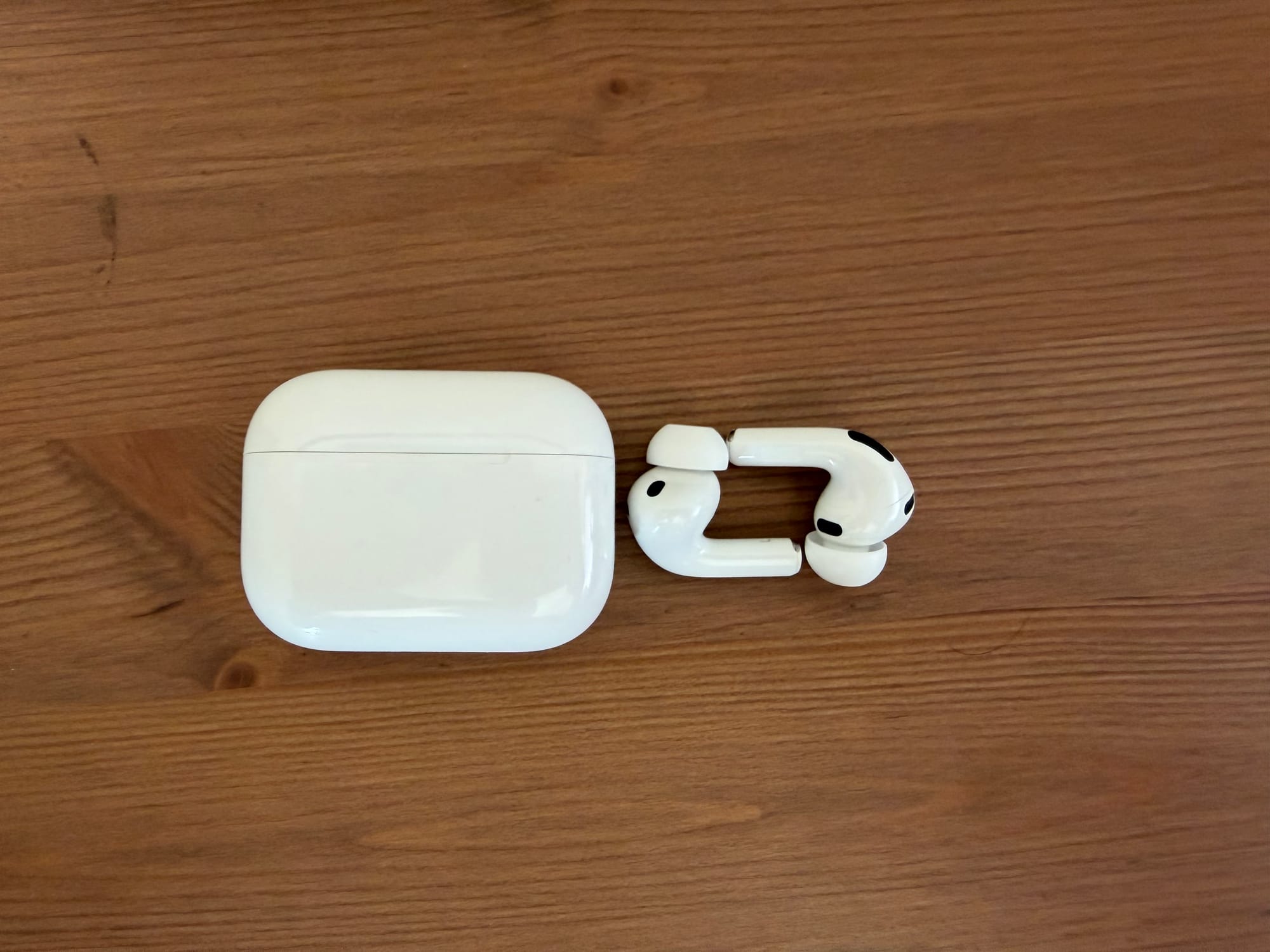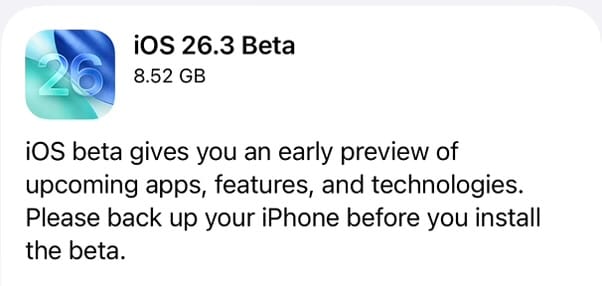The Verdict
Technically the best all-around wireless earbuds for iPhone users, but "best" doesn't mean "better for everyone." Impressive improvements in ANC and features, but introduces new friction in fit and battery management.
What We Love
- Class-leading ANC removes 2x more noise than Pro 2
- Excellent sound quality with improved bass and detail
- IP57 rating provides genuine sweat and water resistance
- Built-in heart rate sensor works surprisingly well
- 8 hours listening time per charge (up from 6)
- Five ear tip sizes including new XXS option
- Live Translation feature shows genuine promise
Room for Improvement
- Hit-or-miss fit even with redesign—one ear feels loose
- Total case battery drops to 24 hours from 30
- Transparency mode degrades music quality significantly
- Nearly impossible to repair at $249 price point
- Still no EQ controls in 2025
- Limited Android support makes them iPhone-only
I expected the AirPods Pro 3 to be an easy recommendation. On paper, they're better than the Pro 2s in nearly every measurable way: improved noise cancellation, longer battery life per charge, heart rate tracking, and a redesigned fit based on thousands of ear scans. Apple's marketing promised "the ultimate audio experience," and reviewers largely echoed that sentiment at launch.
But after a month of daily use, I find myself in an unexpectedly complicated relationship with these earbuds. They're genuinely impressive in some ways, frustrating in others, and have made trade-offs I didn't see coming. This isn't the straightforward upgrade story I anticipated.
Design & Fit: Progress, But Not For Me
The most noticeable change with the AirPods Pro 3 is the redesigned earbud architecture. Apple claims to have analyzed over 10,000 3D ear scans with more than 100,000 hours of user research, and the results show — at least for some people. The earbuds now feature an angled design that better aligns with the natural geometry of the ear canal, and the ear tips are rotated inward for a more secure fit.
Here's where my conflict begins. For many users, this translates to a noticeably improved fit. The seal feels more stable during movement, and the five included ear tip sizes (including a new XXS option) mean more people can find their ideal fit. Apple has also added a foam-infused layer to each tip, which enhances passive noise isolation even before ANC kicks in.
But for me? The fit is frustratingly inconsistent. The Large tips are the closest to working for me — they pass Apple's acoustic seal test and don't cause discomfort. But here's the problem: one ear constantly feels like the earbud is about to slide out. If I twist it just right during insertion, I can get it to stay put, but it requires that precise positioning. During a workout? I'm spending more time adjusting and battling with them than I should need to.
This is particularly annoying because Apple explicitly marketed the improved fit for activities like "running, HIIT, yoga, and more." For casual listening at my desk, they're fine. But the moment I start moving — actually using them for the fitness tracking they now include — I'm hyper-aware of that one earbud feeling loose and having to readjust mid-set.
And I still wish Apple offered an XL ear tip option. Despite all that research on 10,000 ears, there are those of us with larger ear canals where even the "Large" tips don't quite seal perfectly. The fact that I need to twist and position them just right to get them stable suggests I'm between sizes. It's a small thing, but it matters when you're wearing these for hours every day or trying to focus on a workout instead of your earbuds.
The earbuds themselves are fractionally heavier than the Pro 2s (0.20 oz vs 0.19 oz), though this difference is imperceptible. What does matter is the improved IP57 rating — a significant upgrade from the Pro 2's IP54. This means the Pro 3s can withstand full submersion in fresh water up to 1 meter for 30 minutes, making them genuinely sweat-proof and rain-resistant. This is a meaningful improvement that gives me peace of mind during workouts — if only they'd stay in place reliably enough for me to actually enjoy those workouts.
Sound Quality: Excellent When You Get It Right (And Therein Lies the Problem)
Apple has equipped the AirPods Pro 3 with a new multiport acoustic architecture that delivers noticeably improved bass response and a wider soundstage. The vocal clarity is exceptional, and the overall sound signature maintains Apple's characteristic balance while adding more depth and detail.
Compared to the Pro 2s, the sound profile is marginally improved — refinements rather than revolutionary changes. The low-end has more punch without bleeding into the mids, and high frequencies feel more detailed without becoming harsh. When everything is configured correctly, these are among the best-sounding true wireless earbuds available.
But here's what frustrates me: you have to actively manage your settings to get that great sound. I discovered this the hard way after a few days of thinking "these don't sound that much better." Turns out, I'd left Transparency mode enabled, and it was significantly degrading music playback quality. The difference is substantial — we're talking about a noticeable drop in clarity, detail, and overall presence.
So now I'm hyper-aware of which listening mode I'm in. Music time? Better switch to ANC or standard mode. Need to hear my surroundings? Okay, Transparency it is, but accept that your music won't sound as good. The Pro 2s never made me think this hard about it.
This is one of those small things that adds up. It's not a dealbreaker, but it's another instance where the Pro 3s demand more mental overhead than their predecessors. I find myself checking settings more often, second-guessing whether I'm getting the optimal experience, and occasionally annoyed that I have to care about this at all.
Active Noise Cancellation: The Flagship Feature
If there's one area where the AirPods Pro 3 truly shine, it's noise cancellation. Apple claims the Pro 3s remove up to 2x more noise than the Pro 2s and 4x more than the original AirPods Pro, and independent testing shows they achieve around 90% noise reduction compared to 83% on the previous generation.
In real-world use, the improvement is immediately apparent. On flights, the Pro 3s eliminate that constant cabin drone almost completely. In busy coffee shops, they create a bubble of silence that lets you focus. While the Pro 2s might get you 90% of the way there, the Pro 3s hit 98% — and that final gap makes a meaningful difference.
This improved ANC does require a proper seal, which brings us back to the fit issue. If you can't get the right ear tips to pass Apple's acoustic seal test comfortably, you won't experience the full benefit of this upgraded noise cancellation.
Heart Rate Sensing: A Welcome Addition
The built-in heart rate sensor is Apple's smallest yet, using photoplethysmography (PPG) technology that pulses infrared light 256 times per second. It integrates seamlessly with Apple's Fitness app and can track over 50 workout types.
For users who don't own an Apple Watch, this is a genuinely useful feature. The accuracy lands in the realm of dedicated fitness trackers, and the convenience of tracking workouts with earbuds you're already wearing can't be overstated.
That said, proper positioning matters for accurate readings. During testing, I found that if the earbuds shifted during intense exercise, the heart rate data could become less reliable. For serious athletes who prioritize tracking accuracy above all else, an Apple Watch remains the better choice.
Live Translation: Promising But Early
Live Translation is the headline AI-powered feature, offering real-time translation across English, Spanish, Portuguese, French, and German (with Italian, Japanese, Korean, and Simplified Chinese coming by year's end). When both people wear AirPods with the feature enabled, the experience is genuinely impressive.
The feature works, but it's clearly in its early stages. There are noticeable delays in more complex conversations, and the system can struggle with accents or technical terminology. It's more of a helpful party trick than a daily essential at this point.
What's notable is that Apple made Live Translation available to AirPods Pro 2 owners via software update, meaning you don't need to buy the Pro 3s exclusively for this feature. This is consumer-friendly move, though it also means it's not a compelling reason to upgrade on its own.
Battery Life: A Trade-Off I Didn't Want to Make
On paper, the battery situation looks improved: 8 hours of listening time with ANC enabled (up from 6 hours on the Pro 2s), and 10 hours when using the Hearing Aid feature in Transparency mode. Apple marketed this as an upgrade, and technically, it is.
But here's what they didn't emphasize: the total battery life with the charging case has actually decreased from 30 hours to 24 hours. And this changes everything about how I use these earbuds.
The extra two hours per charge is nice for long flights or marathon work sessions — situations where uninterrupted audio genuinely matters. But in day-to-day use? I didn't need 8-hour battery life. I needed that "set it and forget it" convenience where the case could go several days, sometimes a full week, between charges.
Now, my AirPods Pro 3 charging case has become yet another device I feel compelled to charge nightly. Not because I have to, but because if I don't, I get low battery indicators far more frequently than I'd like. It's one more thing to think about, one more cable to plug in, one more device competing for space on my charging setup.
The Pro 2s had this effortless quality where battery anxiety basically didn't exist. The Pro 3s? They've introduced that anxiety back into the equation. I genuinely wish I could trade the extended single-charge time for the old case capacity. Give me 6 hours per charge and 30 hours total any day.
This might seem like a minor complaint, but it's emblematic of my broader issue with the Pro 3s: they've added features and improvements that look good in marketing materials while introducing friction that impacts daily use. It's progress, sure, but it's not the kind of progress I actually wanted.
Hearing Health Features: Expanded But Region-Locked
Apple has expanded its end-to-end hearing health experience with the Pro 3s. The Hearing Test can now be taken in a broader range of background conditions, and the Hearing Aid feature includes automatic Conversation Boost with 67% more battery life in Transparency mode.
Active Hearing Protection helps prevent exposure to loud environmental noise, though this feature has only just rolled out to EU and UK users following regional certification.
These features are genuinely useful for users with mild to moderate hearing loss, and the clinical-grade hearing aid functionality is a meaningful accessibility win. However, not all features are available in all regions yet, which can be frustrating for international users.
The Elephant in the Room: Repairability
According to a recent teardown, the AirPods Pro 3 are nearly impossible to repair. This isn't new for the AirPods line, but it remains a significant concern for a $249 product. When the battery eventually degrades or something breaks, your options are extremely limited.
What's Missing
Despite all the improvements, there are notable omissions:
- No EQ controls: In 2025, even budget earbuds offer in-app equalization. The lack of this feature on a premium product is baffling.
- Limited Android support: You can pair these with Android devices, but you'll only be able to play music. No firmware updates, no settings access, no advanced features.
- No high-quality codec support: Still limited to Bluetooth 5.3 with SBC and AAC. No aptX, no LDAC.
- Size limitations: Still no XL ear tips for users with larger ear canals.
The Verdict: I Wanted to Love These More Than I Do
Here's my conflict: objectively, the AirPods Pro 3 are excellent wireless earbuds. The noise cancellation is legitimately the best I've experienced in any in-ear headphones. The sound quality is superb. The IP57 rating means I don't worry about them during workouts or in the rain. And the heart rate sensor actually works well enough to be useful.
But subjectively? They've introduced friction into my daily routine in ways the Pro 2s never did. I'm more aware of the charging case needing power. I'm conscious of mild ear discomfort during longer listening sessions. I find myself second-guessing whether I'm in the right listening mode for optimal sound quality. The Pro 2s just worked; the Pro 3s ask me to think about them more.
And that's the rub. Apple has added impressive technology and measurable improvements, but in doing so, they've created a product that demands more attention and management than its predecessor. For some users, that trade-off will be worth it. For me, I'm still deciding.
Who should buy them:
- Current AirPods Pro 2 owners who struggle with fit or need dramatically better ANC
- First-time Pro buyers or those upgrading from the original AirPods Pro
- iPhone users who prioritize fitness tracking and don't own an Apple Watch
- Frequent travelers who need the absolute best noise cancellation
Who should think twice:
- Recent AirPods Pro 2 buyers who are happy with what they have
- Anyone who valued the Pro 2's "set it and forget it" battery life
- Android users (seriously, these aren't for you)
- Users perfectly comfortable with the Pro 2 fit (the Pro 3 fit is genuinely hit-or-miss)
At $249, the AirPods Pro 3 are technically the best all-around wireless earbuds for iPhone users. But "best" doesn't always mean "better for everyone." They represent Apple's vision of a future where earbuds are multifunctional health devices, not just music players. That vision is impressive, but it comes with compromises I didn't expect to make.
Final Score: 4.5/5 stars
The AirPods Pro 3 earn high marks for class-leading ANC, excellent sound, and innovative features. They lose half a star for introducing new pain points — literally, in terms of fit comfort — while solving old ones. More importantly, they've made me realize that sometimes evolution means complexity, and I'm not entirely sure that's the direction I wanted these to go.












Discussion